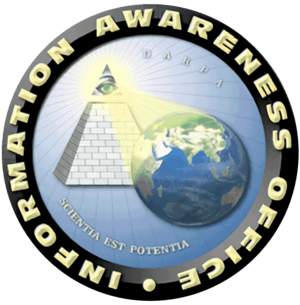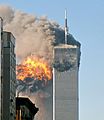Mass surveillance in the United States facts for kids
Mass surveillance in the United States means watching or collecting information about many people at once. This practice started a long time ago, especially during big wars. During these times, the U.S. government would monitor and censor messages going in and out of the country. This was done to keep the nation safe.
After World War I and World War II, this kind of watching continued. Programs like the "Black Chamber" and "Project SHAMROCK" were used. As federal law enforcement and intelligence agencies grew, so did surveillance. Groups like the FBI, CIA, and NSA became very involved. For example, the COINTELPRO projects from 1956 to 1971 were part of these efforts.
More recently, in 2013, news reports showed many new surveillance programs. These programs were used by the U.S. intelligence community. Today, advanced computers and information technology make it easier to create huge databases. These databases hold lots of information about people in the United States. This technology helps make mass surveillance possible.
Contents
What is Mass Surveillance?
Mass surveillance is when a government or organization watches or collects data on a large number of people. This can include phone calls, internet use, or even where people go. The goal is often to find threats or gather information. However, it also raises questions about privacy.
Why Does the U.S. Use Surveillance?
The main reason the U.S. government uses surveillance is for national security. This means protecting the country from dangers like terrorism or spying by other nations. Agencies believe that by collecting information, they can find and stop threats before they happen.
Early Surveillance Efforts
In the past, surveillance was mostly about listening to phone calls or reading letters. During big wars, the government wanted to make sure no one was sharing secrets. They also wanted to control what information reached the public. This was called censorship.
Surveillance After World Wars
After the two World Wars, surveillance became more organized. Agencies like the FBI and CIA were created or grew larger. They started programs to watch groups or individuals they thought might be a threat. Sometimes, these programs watched people who were simply protesting or speaking out.
Modern Surveillance and Technology
In recent years, technology has changed surveillance a lot. Computers can store and process huge amounts of data. This means governments can collect information from many sources at once.
How Technology Helps Surveillance
Today, surveillance can involve many things. It includes tracking phone calls, emails, and internet searches. It can also involve watching social media or using cameras. These technologies make it possible to collect data on millions of people very quickly.
The 2013 Disclosures
In 2013, many secret surveillance programs became public. These reports showed how much information the U.S. government was collecting. They revealed programs that gathered phone records and internet data from ordinary citizens. These disclosures led to a big public discussion about privacy.
Databases and Data Collection
Modern surveillance often relies on large databases. These are like giant digital filing cabinets that store information. When you use your phone or the internet, some of your data might be collected. This data can then be added to these databases.
Impact and Debates
Mass surveillance is a complex topic. It involves balancing national security with personal privacy. Many people believe that surveillance is needed to keep the country safe. Others worry that it goes too far and invades people's privacy.
Privacy Concerns
A major concern is that mass surveillance might violate people's rights. People worry that their private information could be misused. They also worry that watching everyone might make people less free to express themselves.
Security Benefits
On the other hand, supporters argue that surveillance helps prevent attacks. They believe that by collecting data, intelligence agencies can find clues. These clues might help them stop dangerous plots before they happen.
Images for kids
-
During the Vietnam War, people who protested were sometimes put on "watch lists."
-
The September 11 attacks led to big changes in U.S. intelligence. This included creating a new position called the Director of National Intelligence.





